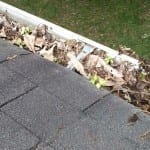
Stay Cozy and Safe with this Essential Chimney Maintenance Guide
The warm glow of a crackling fire is a wonderfully relaxing part of your home’s ambiance during the winter months. It can also keep your toes toasty and help you save a little money on your heating bill. If you haven’t done it recently, it’s time for chimney maintenance!
But a poorly maintained chimney can put your family in danger from chimney fires and carbon monoxide leaks. Proper chimney care will help you make sure that your family stays safe while you enjoy your fireplace this winter.
Why Chimney Maintenance is so Important
Fireplaces are beautiful and warming but harness one of nature’s more dangerous forces: fire. Your chimney’s designed to take the heat and toxic gases that the fire produces and safely remove them from your home.
Therefore, keeping your chimney in perfect working order is crucial for keeping your home and family safe.
One of the products that wood-burning fireplaces produce is creosote. Creosote is a black or brown residue that accumulates inside your chimney.
It can have a sticky or flaky consistency or can be hardened onto your chimney’s liner. Creosote is highly combustible, so allowing it to build up inside your chimney can lead to a fire.
Another by-product of any combustion, including the fire in your fireplace, is carbon monoxide. This colorless, odorless gas is highly toxic to humans and pets. It latches onto the same place on your red blood cells where oxygen belongs, blocking oxygen and essentially causing slow suffocation.
Because you can’t see or smell carbon monoxide, carbon monoxide detectors are essential home safety items. This is especially true if you have a fireplace, wood-burning stove, or any combustion heating system, such as natural gas, propane, or fuel oil.
Anything that burns produces carbon monoxide. When a chimney inspector checks your chimney liner for leaks, they are checking for spaces where burning embers can escape and cause a fire.
They also check for spaces where deadly carbon monoxide can leak into your home’s atmosphere.
How Often Should you Clean and Inspect your Chimney?
The Chimney Safety Institute of America (CSIA) recommends having your chimney inspected and cleaned yearly by a CSIA-certified chimney sweep. This trained, certified chimney expert can make any further chimney maintenance recommendations based on your specific chimney type, conditions, and use.
What Type of Inspection does your Chimney Need?
Chimney inspections used to be at the discretion of each chimney sweep and could vary quite a bit. That changed in 2000 when the National Fire Protection Association adopted specific standards for three levels of chimney inspections.
Now, chimney sweeps have detailed guidelines on what to check for a Level I, Level II, or Level III Inspection. There are also guidelines for when each type of inspection is necessary.
If you plan to use your fireplace similarly, you only need a Level I Inspection.
The use of these guidelines makes sure that each chimney gets the type of care that it needs. As a homeowner, it’s a good idea to be aware of what type of inspection your chimney needs so you can be proactive about your family’s safety.
The CSIA’s webpage describes each type of inspection and when each type is necessary so you can have an idea of which type of inspection you will need before you call the chimney sweep.
How to Find the Right Person for the Chimney Maintenance Job
Because your chimney is so essential for your family’s safety, you don’t want to hire just anybody for the job. The Chimney Safety Institute of America (CSIA) has this tool on their website to help you find a CSIA-certified chimney sweep in your area when you’re ready to have your chimney cleaned and inspected.
They also have this handy list of important questions to ask a chimney sweep before hiring them to do the job.
More Chimney Maintenance Tips
There’s more to being a good chimney owner than cleanings and inspections, so here are a few more tips:
-
Avoid and recognize chimney fires.
- There are things you can do to help prevent the excessive buildup of creosote. This is a major cause of chimney fires. This informational page from the Chimney Safety Institute of America offers helpful tips on preventing creosote buildup and also tells you how to recognize the signs of a chimney fire.
-
Get a carbon monoxide detector and use it properly.
- Carbon monoxide detectors are just as essential for your family’s safety as smoke detectors. But just buying one isn’t enough: a carbon monoxide detector installed too far away from where it needs to be or with dead batteries can fail when you need it the most.
-
Don’t let warm air escape up your chimney.
- While your fireplace helps keep you warm, your chimney can be an escape route for precious warm air when your fireplace isn’t in use if you aren’t careful. Be sure to close the flue completely after you finish using the fireplace. And if you have a fireplace that you won’t use this year, consider installing something like this fireplace balloon to block warm air from escaping up the chimney. There are also other options like this fire-resistant blanket that can be placed on the outside of the fireplace screen when the fireplace isn’t in use to block cold air from entering your home.
-
Fireplace safety is as essential as chimney safety.
- Of course, always keep a screen in place when using your fireplace. This will prevent any embers from escaping. Don’t leave the fireplace unattended until you’re sure the fire is completely out.
-
Only burn firewood or approved materials.
- Never burn building materials such as treated wood in your fireplace. This is because it can contain dangerous chemicals that can release poisonous gases into the air. To be safe, only burn firewood or materials used in home fireplaces.
Enjoy your time by the fireside!










